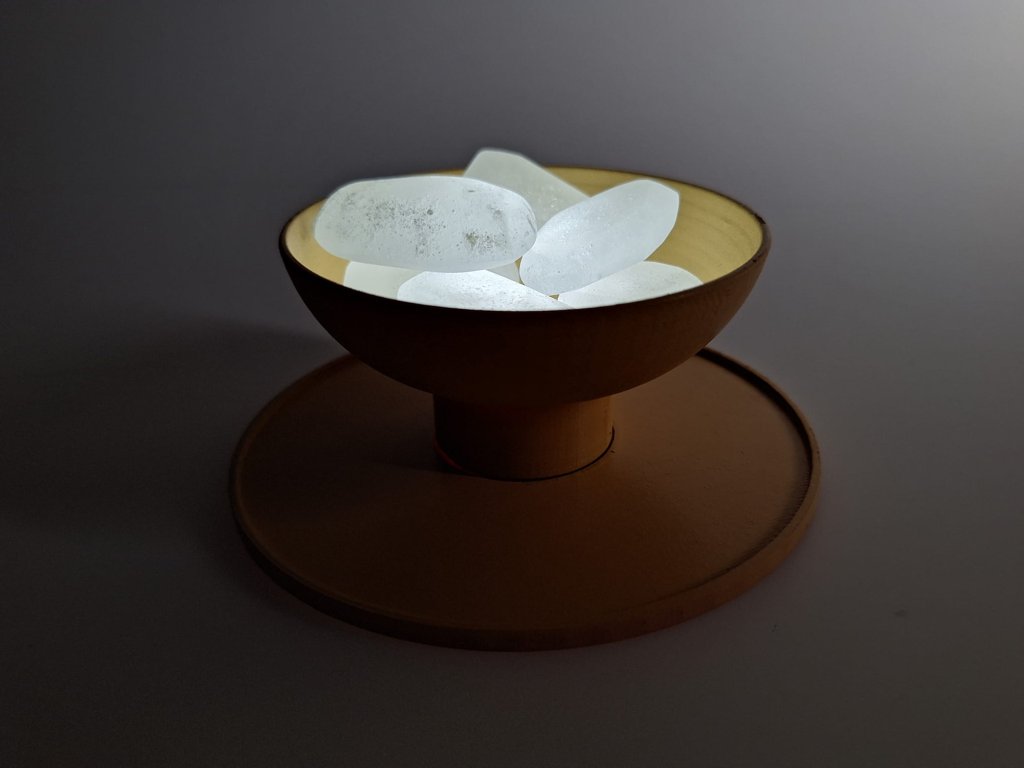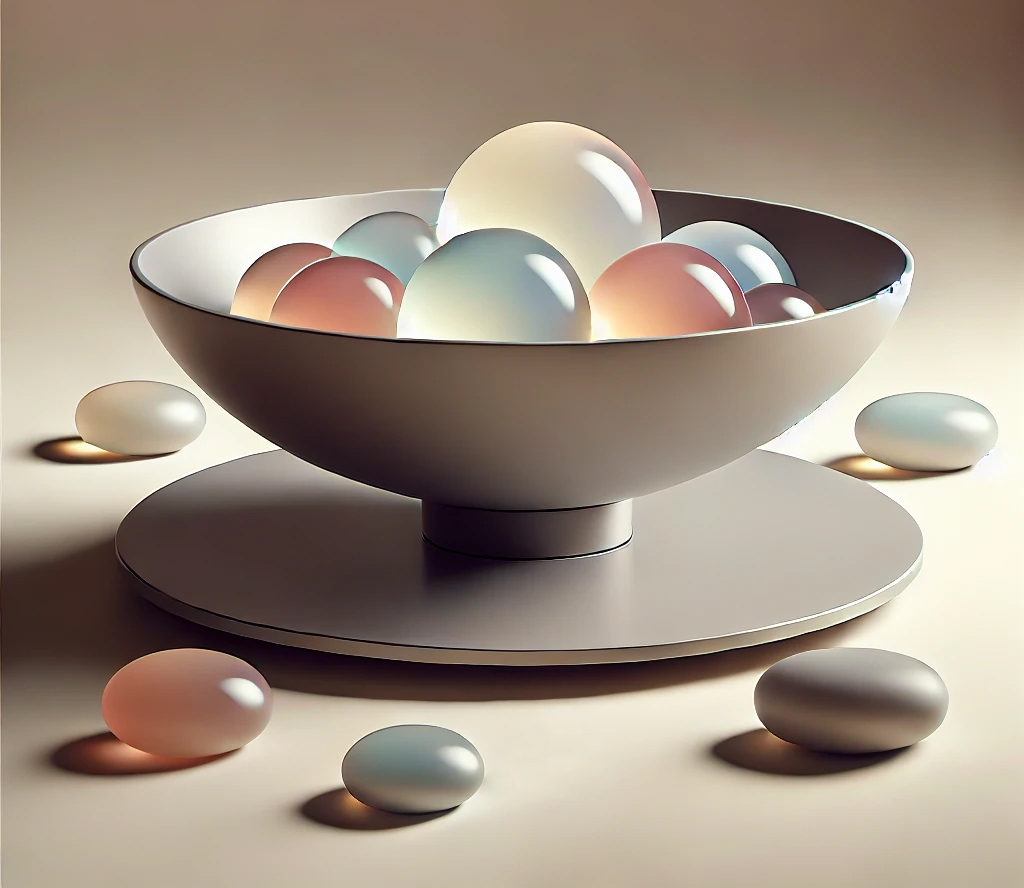The Serenity Bowl explores how multisensory design can support emotional well-being. It focuses on people recovering from severe depression who often find the step back into everyday life daunting. Many feel uncertain about their progress or lose the routines built up during therapy, which can make them vulnerable to relapse. We set out to create an object that could gently guide moments of reflection and grounding, without feeling clinical or intrusive. The aim was to design something that feels safe, calming and familiar; an everyday companion that helps people reconnect with themselves and recognise the small steps that matter in recovery.
Can healing be held in the palm of your hand?
The Serenity Bowl is a hands-on bowl filled with soft, stone-like pieces that carry affirmations. Patients write their own notes on the stones, or exchange them with family, fellow patients or therapists. The ritual is simple: write a note, take a small action that feels rewarding, then read the words back before placing the stone into the bowl. In response, the bowl glows with light, sound and scent, creating a calm, sensory moment. Users can choose between two modes: Ocean, with gentle waves and a cool glow, or Fire, with warm tones and a soft crackle. The design was guided by three principles: habit building, encouraging regular use; feedback mechanisms, where sensory responses reinforce small actions; and conceptual metaphors, using water and fire to express emotional states.
The Serenity Bowl connects to Health and Well-being by showing how design can support recovery through everyday rituals. It helps people slow down, reflect and acknowledge their own small achievements, turning abstract progress into something visible and felt. By involving family, peers and therapists, it also creates moments of connection and shared encouragement. The impact lies in making recovery feel less clinical and more personal, bridging the gap between professional treatment and daily life. At the same time, the bowl is not a cure on its own. Its role is to complement therapy and medication, offering calm, motivation and reassurance through simple interactions that encourage long-term resilience.


